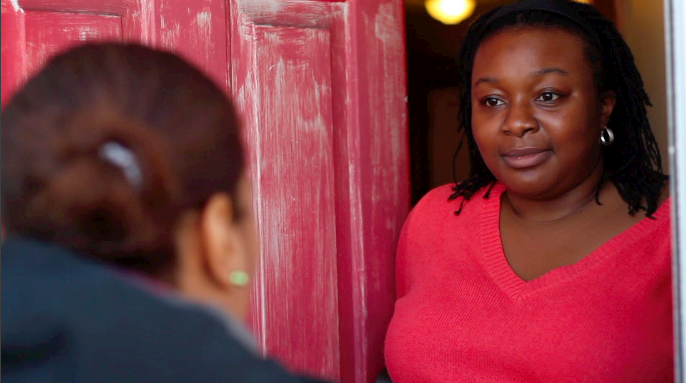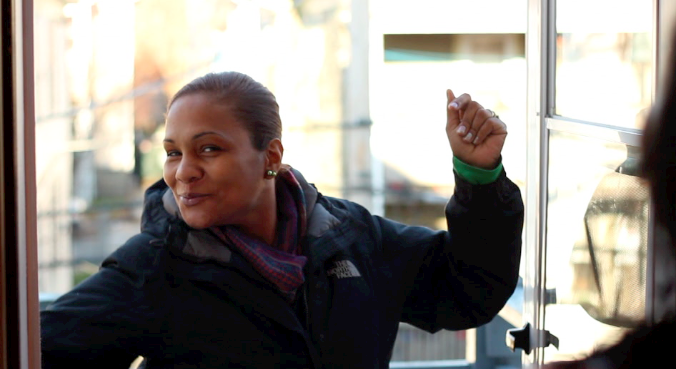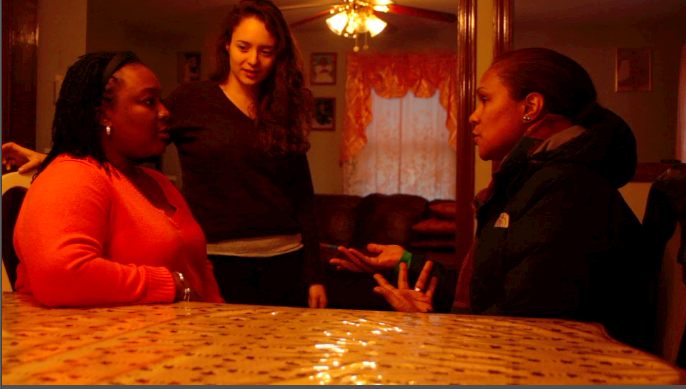“Action.”
Ayana opens the big red door to reveal Sori dancing in the background. We burst out laughing.
“Cut,” I say through my giggles. Even though we have a lot to do, we always have time for a little fun. Ayana and Sori have carved time out of their busy schedules as community health workers (CHWs) working with patients who have HIV – making sure they receive their medications, accompanying them to medical appointments, and helping them navigate the complex social challenges in their lives. Today, Ayana and Sori are modeling how a CHW might talk to a patient for a video that we will use in training sessions for new CHWs. We shoot several scenarios, with good and bad examples.
When I talk about my job at PACT with friends and family, they sometimes have a hard time understanding why CHWs are so important. How could someone who is not a doctor or nurse make such a big difference in health? I explain that well-trained CHWs can meet patients where they are, both physically and metaphorically. Unlike doctors, CHWs can travel to patients’ homes to provide health education and support adherence to medication, keeping those who might otherwise fall through the cracks connected to the health system. Moreover, CHWs, who share language and culture with patients, are able to achieve a high level of trust and understanding with patients.
At PACT, we believe that CHWs could transform the US health care system to better meet the needs of the marginalized and the underserved. In 1997, PACT brought Partners In Health’s accompagnateur model from rural Haiti to urban Boston. For the past 15 years, PACT CHWs have worked with some of the sickest people with HIV/AIDS in Boston. We’ve found that patients with CHWs get healthier and need less expensive services than patients without CHWs. Hearing of our success, other groups have adopted our model. PACT has since founded the Training and Technical Assistance Institute to support other groups that wish to learn from our experience.
As a fellow at PACT, I have the pleasure of learning from a renowned direct service organization with 15 years of experience while also being part of relatively new efforts to drive change in the American health care system. In my role with the Training and Technical Assistance team, I explore potential opportunities for PACT, think through how a CHW model might work for potential partners, write research papers, and develop training materials for CHWs and associated staff.
The videos I am filming with Ayana and Sori are part of these training materials. For the rest of the afternoon, as I watch Sori demonstrate how she works with client, I am reminded of how valuable CHWs are. I am proud to be part of an organization that is affecting people’s lives and transforming the health care system. But this is just the beginning. What we need now is…
ACTION.



